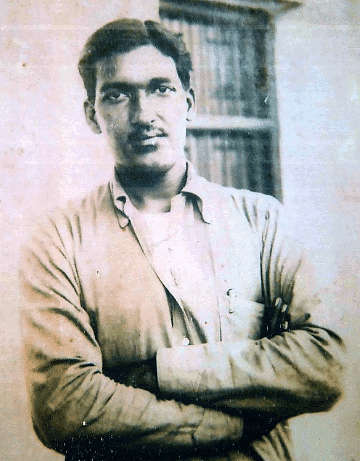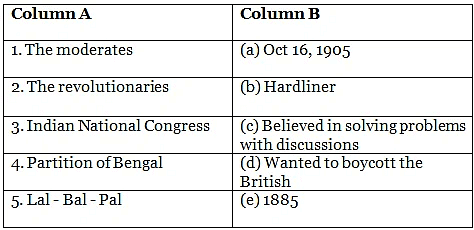Freedom Struggle - 1 Class 5 Worksheet SST
Q1: Multiple Choice Questions (MCQs)
(i) ___________ believed in a revolutionary approach.
(a) Mahatma Gandhi
(b) Dadabhai Naoroji
(c) Bal Gangadhar Tilak
(d) None of these
(ii) Who among the following was a member of the moderate group in the Indian National Congress?
(a) Bal Gangadhar Tilak
(b) Lala Lajpat Rai
(c) Dadabhai Naoroji
(d) Bipin Chandra Pal
(iii) The Indian National Congress was founded in
(a) 1912
(b) 1905
(c) 1885
(d) None of these
(iv) What was the main reason given by the British for the Partition of Bengal in 1905?
(a) Religious divisions between Hindus and Muslims
(b) Administrative inconvenience
(c) Economic reforms
(d) To promote Indian unity
(v) Which famous slogan did Bal Gangadhar Tilak use to motivate Indians during the freedom struggle?
(a) "Inquilab Zindabad"
(b) "Vande Mataram"
(c) "Freedom is my birthright and I will have it"
(d) "Swaraj is our goal"
Q2: True & False
(i) The Indian National Congress was started by W. C. Bonnerjee.
(ii) Ashfaqullah Khan was a revolutionary.

Q3: Fill in the blanks
(i) The British partitioned Bengal to divide the ________.
(ii) The British followed the policy of ______ and rule.
Q4: Match the following

Q5: Short Answer Type Questions
(i) Who founded the Indian National Congress?
(ii) What was the approach of the moderates? How were they different from the hardliners?
(iii) Explain the Divide and Rule policy of the British.
You can find Worksheet Solutions here: Worksheet Solutions: Freedom Strugggle - 1
|
33 videos|376 docs|50 tests
|
FAQs on Freedom Struggle - 1 Class 5 Worksheet SST
| 1. What were the main causes of the Freedom Struggle? |  |
| 2. Who were the key figures in the Indian Freedom Struggle? |  |
| 3. What were the major movements that contributed to India's independence? |  |
| 4. How did World War II impact the Indian Freedom Struggle? |  |
| 5. What was the significance of the Indian National Congress in the Freedom Struggle? |  |
















